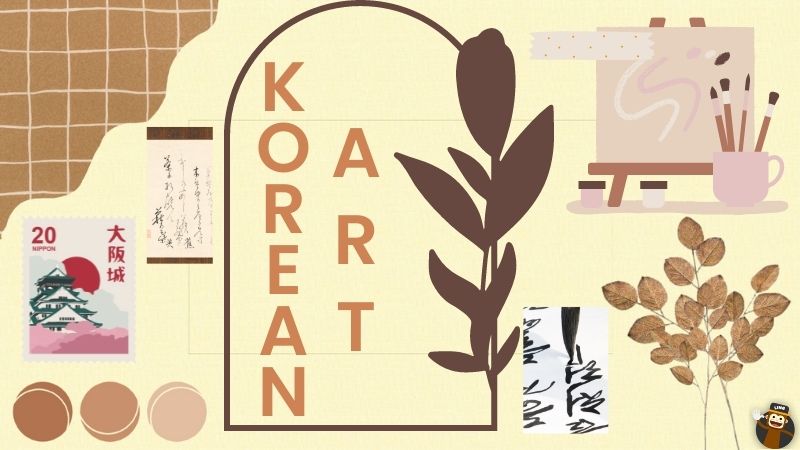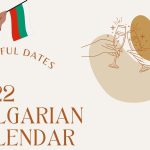You must have heard “An art given birth to and developed by a nation is its own art” but did you ever feel intrigued to know about the Korean art forms and their history? This blog post will help you learn new things about Korean art that you have never heard before, so let’s get started!
Korean Art
Other than the Korean national museum, the Korean art market has over 50 local galleries displaying exquisite arts in well-selected and beautifully produced exhibitions. Every town has several smaller regional galleries where local artists exhibit in classical and innovative mediums.
Keep reading the article below for interesting Korean art features and its history.
Attributes Of Korean Art
Many traditional arts, including ceramics, calligraphy, music, calligraphy, and painting, have evolved in Korea, with a concentration on beautifying surfaces with natural forms. Chinese and Japanese style art had a significant impact on Korean artistic taste, with Korean painters taking identifiable techniques and motifs from their works.
Simplicity In Korean Art
Koreans have long valued simplicity, tenderness, a sense of balance, serenity, and harmony. Korean counterparts have just a minor representation of rigid straight lines or curved lines.
Concept Of Naturalism
Korean art is associated with the concept of naturalism, exhibiting a profound connection with the artist’s natural environment in its non-complex and harmonious composition. It is distinguished for its simple and elegant composition.
The Technique Of Unadorned Surfaces
Naturalism in art led to a preference for unadorned surface decoration in the wood engraving techniques of Korean sculptors and Korean potters over techniques that employ acute angles, sharp lines, and bold outlines.
An interesting technique isn’t it? Let’s delve more into Korean art history and find out the specific influence which gave rise to fame as well as elegance in Korean art.
Historical Traces Of Korean Art
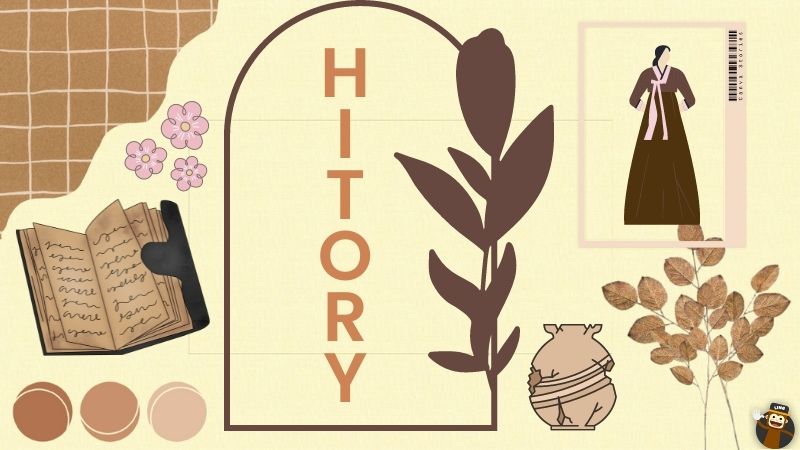
Humans have lived on the Korean Peninsula since at least 50,000 BC. However, artifacts dating to the Neolithic era, pottery remnants were discovered.
The Neolithic Age And Korean Art
The earliest examples were clay pottery styles, like Siberian styles, traced back to 7,000 BC in the Korean Peninsula. They were quasi-opened pits having raised horizontal lines and geometric patterns. During this period, Jeulmun-style pottery and Mumun-style pottery appeared uniquely Korean.
The Bronze Age And Korean Art
Bronze products such as zinc were imported from neighboring countries and manufactured in Korea between 2000 BC and 300 BC. Such as,
- Weapons
- Items used in rituals like mirrors, bells, etc
- Red pots high in iron
- Animal carvings on rocks
The Iron Age And Korean Art
It was usual for Koreans to mimic techniques and technologies from their eastern counterparts throughout the early Korean iron age. Chinese iron casting techniques and the Chinese bowl were introduced during this period.
Art Of Ancient Korea And The Period Of Three Kingdoms (57 BC-668 AD)
There were three main Kingdoms that ruled the Korean Peninsula: Goguryeo, Silla, and Baekje.
Art And Period Of Goguryeo Kingdom
Goguryeo was the name given to southern and central Manchuria, as well as sections of modern-day Korea. Goguryeo art was heavily influenced by Buddhism where royals started decorating the murals on ancient tombs.
Art And Kingdom Period Baekje
The finest Korean traditional art originated in this period of Baekje, influenced by the southern Chinese dynasties. Religious sculptures in a Korean style’s natural characteristics of compassion and harmonic proportions were the contexts of art.
Art And Silla Kingdom Period
Many discovered Korean crafts came from the Silla kingdom because it was the most secluded of the three and also the last to adopt Buddhism as the region’s particular faith.
Korean Art And Unified Silla (698-926 )
Unified Silla was a golden age in the composition of Korean traditional artwork, particularly Buddhist art, Buddhist temples, and Buddhist iconography. The Seokguram grotto and the Bulguksa Temple are two masterpieces that illustrate this time.
Korean Art And Goryeo Dynasty (918-1392)
Celadon ceramics were popular throughout the Goryeo Dynasty. Korean potters had developed their distinctive style.
The Korean celadon had a distinctive glaze which was obtained by reducing the oxygen of iron-based blue-green celadon. Korean celadon included organic shapes like fish, a free-flowing manner, melons, and other creatures.
This celadon, now at the London British Museum was made for Buddhist monks and royalty. This type of cushion was used for sleeping at night and buried with its owner after he or she died. In the Goryeo dynasty, the Unique Korean Inlay technique was frequently applied to the metal as well.
Korean Art And Joseon Dynasty (1392–1910)
Joseon monarchs rejected Goryeo Buddhism in favor of Neo-Confucianism as Korea’s ideological foundation. In the Joseon Dynasty, Korean paintings as landscapes evolved as the major genre of art in Joseon Korea.
An-Gyeon, an authorized painter of the Joseon palace in the 15th century, embraced landscape painting and inspired many other Korean artists during his career. His masterpiece, Peach Blossom Land (now in Cleveland museum South Korea), earned highly developed appreciation as he used an ink-and-color silk scroll style giving birth to traditional Korean painting. An-Gyeon also dabbled in traditional Chinese art and paintings.
Numerous Korean intellects and government officials were also trained in calligraphy, wash painting, and ink painting as well.
White porcelain was the most regarded genre of ceramics throughout the Joseon dynasty, which coincided with Ming Dynasty art.
Contemporary Korean Art
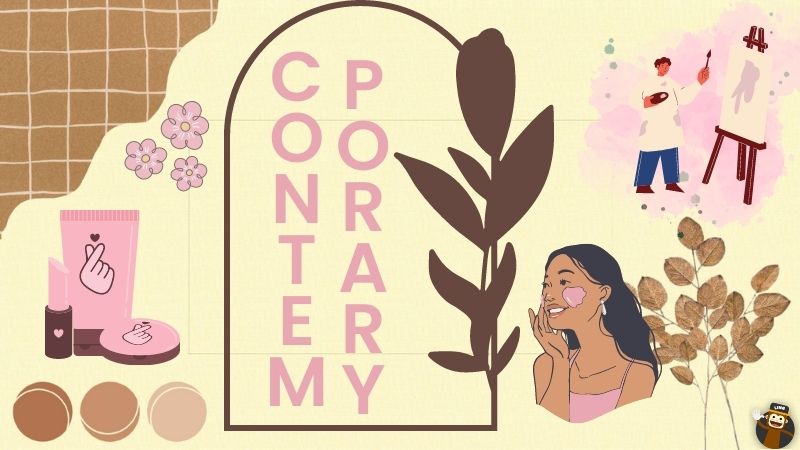
In the 1880s, after the Japanese invasion of Korea, art institutes were closed down, renowned works were demolished or stolen, and Japanese styles and subjects supplanted traditional Korean art.
After the liberation of Korea from Japan in 1945, the modern art of Korea has emerged from the previous domination of Japanese styles, assisting Korean artists in recovering their individuality and distinctive forms of cultural expression.
However, after the civil war, Korea was divided into South Korea and North Korea. And now the states have their own style of Korean Art. North Korea has mostly preserved its traditional art along with a mix of state-authorized art.
Whereas, the South Korean government’s policy to open borders has resulted into now western Korean-style art which includes several types of arts such as hip-hop, beatboxing, k-pop, ballet, etc.
North Korea is an isolated country but we can also see some development in art.
Art In North Korea
The painting was only permitted in the nationalist type during Kim II-reign, sung’s and misinformed banners were the anchor visual art of North Korea. After the death of Kim Il, restrictions on paintings got softened or totally eliminated, under Kim Jong-il. To supplement posters, new visual arts arose, including a type of painting and sculpture exclusive to North Korea.
Other creative forms beyond postmodernism can be found in the nationalistic films that portrayed norms and culture of the post-Korean civil war era till 1994. Other arts such as architecture, work of fabrics, and calligraphy also emerged in this period.
The biggest influence was on rebel posters, multiples, realistic paintings, documentaries, and magnificent architecture, with minimal effect on residential pottery, exportable needlework, ceramics, and graphic crafts. North Korean artists and Fwhang sisters escaped to the U.S. at the end of the 1950s.
Both steered clear of politically driven comments in favor of turbulent landscapes that bridge Far Eastern and Western painting methods. North Korean artists are well-known for their creativity.
Transitions In Korean Art
Korean art can be distinguished by the religious transitions:
- Shamanist art,
- Buddhist art
- Confucian art
- Now diverse Western arts.
Types Of Korean Art
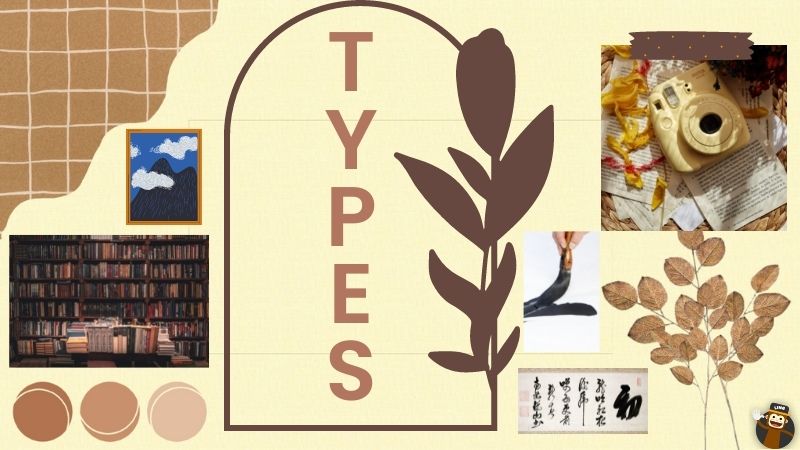
Korean art can be divided into different categories based on the mediums and techniques used, ranging from Korean portraits to many other Korean crafts like pottery and sculpture, as well as calligraphy, music, poetry, folk dances, handicrafts, and architecture. Here are some of the most notable Korean art forms.
Korean Music
In Korea, music refers to “nationwide music,” which includes traditional music of Korea along with dances, and ceremonial gestures.
Traditional Korean music is usually divided into numerous categories.
- The legitimate music enjoyed by Joseon’s king and aristocracy
- Folk music, dance, and court music were performed for the Emperors at royal celebrations.
- Music and dance have been linked to shamanic and Buddhist traditions.
Korean Sculptures And Ceramics
Korean pottery related to Korean ceramics is a well-known form of art in Korean history. It is linked to Korean ceramics such as large murals, tile work, and architectural components. The Chinese culture has heavily influenced Korean pottery methods.
Korean ceramics rose to prominence in Japan, becoming the most well-known Korean art form among the Japanese. Korean chambered kilns were extremely effective in transforming high-quality local resources into finished goods that were subsequently shipped to Japan.
Korean Sculptors And Ceramicists
Korean pottery is a well-known and prominent art form also related to ceramic work, which is like the work of tiles, architectural features, and murals. Some popular ceramics are,
- Cheongja
Cheongja is a Korean stoneware that saw significant growth in the work of potters between 700 and 1,000 years ago during the Goryeo era. These pots had an appealing jade blue surface through a unique Korean Inlay technique.
- Baekja
6 centuries ago, white porcelain ware was the paramount image of Korean ceramics art. Baekje, a white milky appearance, is one of the forms of ancient pottery. Many of these sculptures were painted with oxidized copper and iron.
Calligraphy In Korea
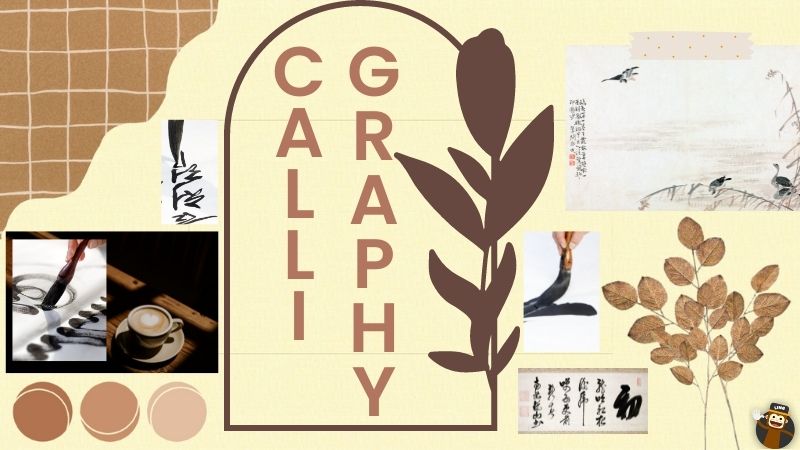
In Korea, calligraphy is an elite form of art, with each brushstroke conveying something of the artist’s personality and character, magnifying the context being painted.
Handmade paper is utilized for a variety of functional and artistic purposes in Korea. It is used in architecture for floor covering and window shielding.
Korean Printing
Painting was the most prominent artistic medium in Korea for most of the twentieth century, with abstraction being of particular attraction to Korean artists in the 1930s.
In the mid-1960s, artist Kwon Young-Woo challenged the ink street artists who began to abuse the art materials and start using them in bizarre ways such as soaking the canvas, tearing paper, sliding pencils through all the art, etc.
Korean Handicrafts
Historically, Korean middle-class craftspeople created a variety of techniques to produce goods that were required at home. They crafted exquisite boxes, baskets, mats from bamboo trees, wisteria, and paper figures. They made masks, dolls, and ceremonial ornaments out of Korean mulberry paper and coated various household things with natural black and red lacquer to make them stronger and more beautiful.
Afterward, they perfected the art of decorating furniture, making household objects, clothes, etc. with finely dyed ox-horn strips, pearls, and abalone shells. Natural dyeing, embroidery, and beautiful knot creation were also important components of traditional Korean art.
Traditional Dance In Korea
Koreans inherited many folk dances. Let’s look at some of them here:
- Spiritual cleansing dance
- Peace Dance
- Shamanic ritual dance
- Idler Dance
- Fan dance
- Dance of Monks
- Dance of Swords
- The Mask dance
- Traditional Music Instruments play
All these folk dances and performances took place during royal court celebrations, marketplace, or on the fields including drumming, singing, and dancing. All of these were modes of entertainment in those times.
Korean Poetry
During the Three Kingdoms period, Korean poems started to thrive. Collections were printed multiple times. Poetry expanded rapidly with the emergence of Joseon nationalism then reached its peak before the 19 century.
There were many attempts to introduce imagist and modern poetry styles, and patriotic poems were particularly effective during the early 20th century republic period. Lyrical poetry dominated after the 1970s.
Renowned Korean Artists
Below are some of the renowned Korean artists and their notable works.
- Jeong Seon (1676–1759)
Jeong Seon, commonly known as Kyomjae, was a traditional Korean painter best known for his landscapes. Jeong’s work comprised ink and Oriental-style water drawings, among other mediums. His style was not artistic, but more realistic, with his landscapes made in the fashionable “true-view” genre at the time.
- Kim Hong-do (1745-1806)
Kim Hong Do was one of several Korean artists to portray ordinary people in his work. Kim hong, also known as “Danwon,” is one of the 3 Wons; Owon and Hyewon. Some of Kim Hong’s significant works include Portrait of Jik-su Seo in 1796 and Album of Genre Painting in the 18th century.
- Kim Jeong Hui (1786-1856)
Kim Jeong Hui was one of Korea’s most distinguished epigraphists, calligraphers, and scholars of the late Joseon dynasty. His most well-known work is an ink painting titled “Wandang Sehando.”
Aside from the older artists involved in traditional Korean art, various modern artists have had an impact on modern Korean art and South Korean art. Park Su-Guen, Nam June Paik, and Chang Ucchin are among the most well-known Korean artists of the twentieth century. David Choe, Schoon Su K, and Amy Solim are three prominent Korean painters of the twenty-first century.
This was a brief overview of Korean art, its history, Korean art’s types, famous artists, and their notable works.
Korean Art Vocabulary
You have gotten a lot of information about Korean art, let’s now also learn some useful words about the Korean arts and its several forms.
| Korean Words | Romanized Korean | English Translation |
| 그림 | geulim | painting |
| 데생 | desaeng | drawing |
| 도화지 | dohwaji | drawing paper |
| 목탄화 | mogtanhwa | charcoal |
| 물감 | mulgam | paint |
| 미술관 | misulgwan | art gallery |
| 붓 | bus | brush |
| 색 | saeg | color |
| 수채화 | suchaehwa | watercolor |
| 스케치 | seukechi | sketch |
| 연필 | yeonpil | pencil |
| 이젤 | ijel | easel |
| 인물화 | inmulhwa | figure painting |
| 전시 | jeonsi | exhibition |
| 정물화 | jeongmulhwa | still life |
| 초상화 | chosanghwa | portrait |
| 추상화 | chusanghwa | abstract |
| 크레용 | keuleyong | crayon |
| 파스텔 | paseutel | pastel |
| 팔레트 | palleteu | palette |
| 풍경화 | pung-gyeonghwa | landscape |
| 화가 | hwaga | artist |
| 화랑 | hwalang | picture gallery |
| 회화 | hoehwa | conversation |
Photography
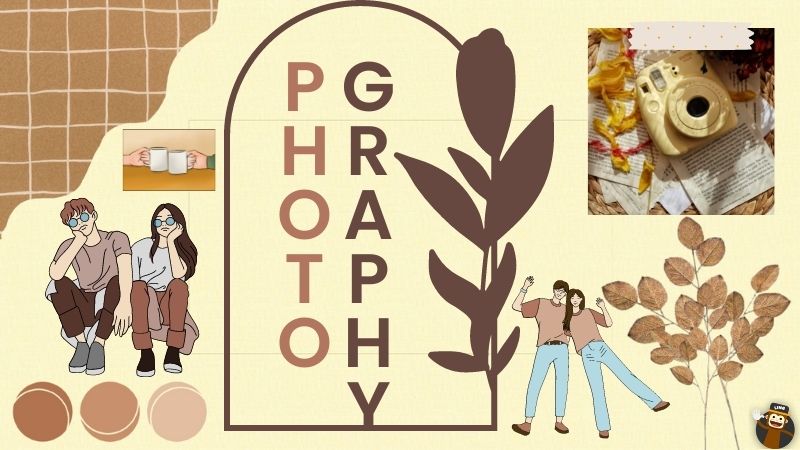
Korean photography is given a lot of hype these days because of its aesthetic appearance. So we bring you some useful words about photography in Korean.
| Korean Words | Romanized Korean | English Translation |
| 노출 | nochul | exposure |
| 디지털카메라 | dijiteolkamela | digital camera |
| 디카 | dika | digital camera |
| 렌즈 | lenjeu | lens |
| 모델 | model | model |
| 반사경 | bansagyeong | reflector |
| 사진기 | sajingi | camera |
| 사진사 | sajinsa | photographer |
| 삼각대 | samgagdae | tripod |
| 셔터 | syeoteo | shutter |
| 인화 | inhwa | |
| 즉석카메라 | jeugseogkamela | instant camera |
| 초점 | chojeom | focus |
| 촬영 | chwal-yeong | filming |
| 카메라 | kamela | camera |
| 피사체 | pisache | subject |
| 필름 | pilleum | film |
| 필터 | pilteo | filter |
Literature
Are you a bit of a reader? Then check out these Korean literature words to help you out while studying literature in Korean.
| Korean Words | Romanized Korean | English Translation |
| 교정 | gyojeong | correction |
| 단편 | danpyeon | snippet |
| 문단 | mundan | Paragraph |
| 문장 | munjang | sentence |
| 소설 | soseol | novel |
| 소설가 | soseolga | novelist |
| 수필 | supil | essay |
| 수필가 | supilga | essayist |
| 시 | si | city |
| 시인 | siin | poet |
| 원고지 | wongoji | manuscript paper |
| 작가 | jagga | Author |
| 장편 | jangpyeon | feature length |
| 절 | jeol | clause |
| 중편 | jungpyeon | middle |
| 편집 | pyeonjib | edit |
| 평론 | pyeonglon | review |
| 행 | haeng | line |
| 희곡 | huigog | drama |
Play
Korean plays are so intense, be it in the form of K-dramas or in the theater. Here are some words about the Korean plays that will enhance your Korean vocabulary:
| Korean Words | Romanized Korean | English Translation |
| 각본가 | gagbonga | screenwriter |
| 감독 | gamdog | director |
| 관객 | gwangaeg | audience |
| 극장 | geugjang | theater |
| 막 | mag | membrane |
| 무대 | mudae | stage |
| 뮤지컬 | myujikeol | musical |
| 배우 | baeu | actor |
| 시나리오 | sinalio | scenario |
| 여배우 | yeobaeu | actress |
| 연극 | yeongeug | western theater |
| 연출가 | yeonchulga | producer |
| 오페라 | opela | opera |
| 장 | jang | page |
Music
And finally some words about music in Korean. Our best guess for what brings you here to learn Korean is K-pop and if that’s right then the words provided below are specially for you. Learn these and improve your Korean!
| Korean Words | Romanized Korean | English Translation |
| 가락 | galag | tune |
| 가수 | gasu | singer |
| 가요 | gayo | song |
| 곡 | gog | song |
| 관현악 | gwanhyeon-ag | orchestra |
| 교향악 | gyohyang-ag | symphony |
| 기타 | gita | etc |
| 노래 | nolae | Song |
| 드럼 | deuleom | drum |
| 민요 | min-yo | folk songs |
| 바리톤 | baliton | baritone |
| 바이올린 | baiollin | violin |
| 반주 | banju | accompaniment |
| 비올라 | biolla | viola |
| 색소폰 | saegsopon | saxophone |
| 성악가 | seong-agga | vocalist |
| 소프라노 | sopeulano | soprano |
| 실로폰 | sillopon | xylophone |
| 심벌즈 | simbeoljeu | cymbals |
| 악보 | agbo | score |
| 연주 | yeonju | play |
| 연주자 | yeonjuja | player |
| 오르간 | oleugan | organ |
| 음 | eum | bell |
| 음표 | eumpyo | note |
| 작곡가 | jaggogga | composer |
| 작사가 | jagsaga | lyricist |
| 장단 | jangdan | beat |
| 재즈 | jaejeu | jazz |
| 지휘자 | jihwija | conductor |
| 첼로 | chello | cello |
| 클라리넷 | keullalines | clarinet |
| 클래식 | keullaesig | classic |
| 탬버린 | taembeolin | tambourine |
| 테너 | teneo | tenor |
| 트라이앵글 | teulaiaeng-geul | triangle |
| 트럼펫 | teuleompes | trumpet |
| 팝송 | pabsong | pop song |
| 플룻 | peullus | flute |
| 피아노 | piano | piano |
| 하프 | hapeu | harp |
| 합창 | habchang | chorus |
Wrapping Up
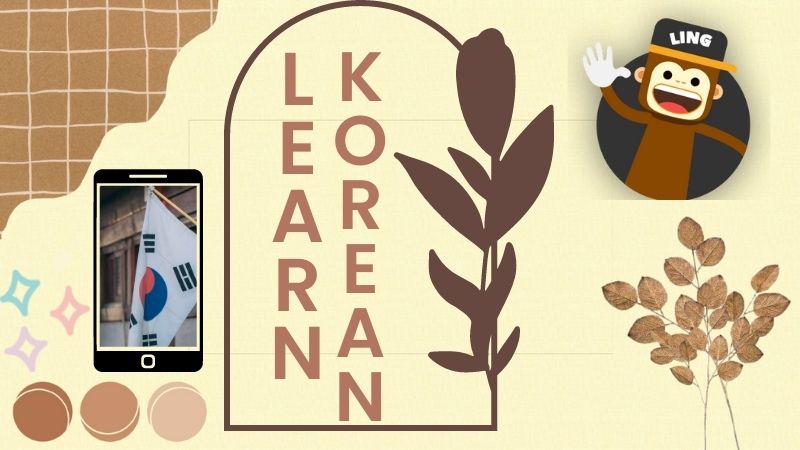
That’s it for this blog. You can now discuss Korean art with your fellas without thinking twice about it. In case you found this blog post useful then you might as well check out some of our other blog posts: Korean Perm and Korean Drama Quotes. Ling App has made learning the Korean language a piece of cake. You do not have to make endless notes and get swamped with the content which might be taking you to. a dead-end. On Ling App, we provide you with the precise information which you will find exceptionally useful and lesson worthy.
Happy Learning!
